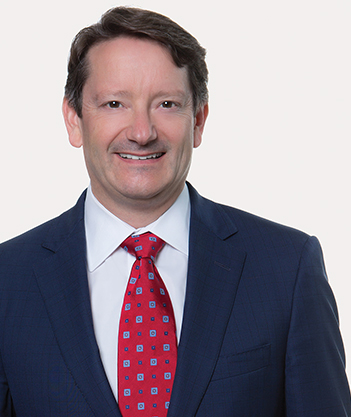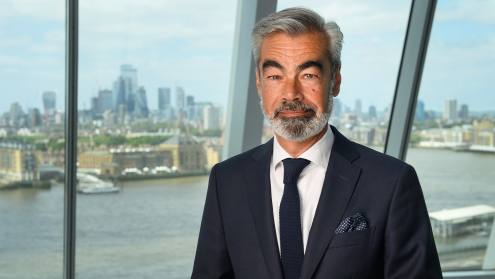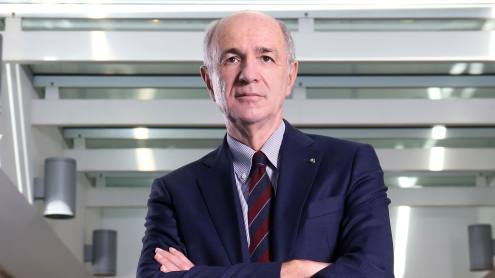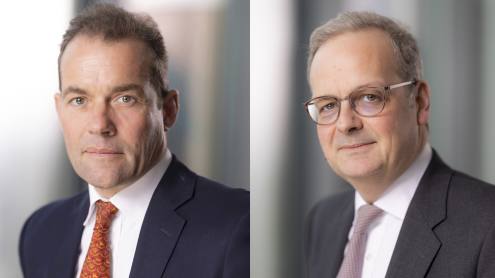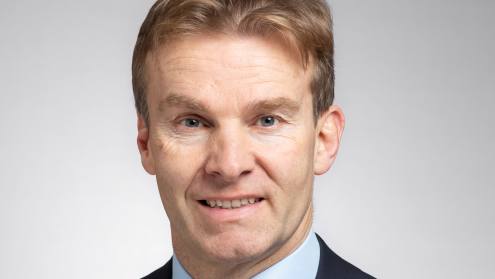Banking will always be in a state of change, believes BMO Capital Markets' CEO and group head Dan Barclay.
Parent company BMO Financial Group marked its 200-year anniversary in 2017, and as part of its celebrations had a book written about its history, which included shareholder letters from different stages in its history throughout the 19th and 20th century. For Mr Barclay, one of the most striking things about these documents was that the overarching message of ‘we live in dynamic times’ was there in each of them. “The world changes, and you adapt to it,” he says.
Career history: Dan Barclay
- 2018 CEO, BMO Capital Markets
- 2017 Head of global investment & corporate banking, BMO Capital Markets
- 2014 Head of Canadian and international investment & corporate banking, BMO Capital Markets
- 2003 Managing director, head of Canadian and international M&A, BMO Capital Markets
- 2001 Principal and head of Canadian energy practice, Morgan Stanley
Today, BMO Capital Markets’ priority is to continue delivering the best possible offering while developing deep and broad relationships with its customers. Mr Barclay observes that this focus on a relationship-based service may be seen as a hallmark of Canadian banking, but BMO prefers to think of itself as North American. “We’ve organised ourselves as a North American bank and that’s the way we are approaching the market,” he says.
Engine of growth
Roughly speaking, BMO Capital Markets’ revenue is split evenly between Canada and the US, with about 10% of revenue coming from its international businesses in Asia, Europe, the Middle East and South America. But it has plans to significantly expand its US business.
“In the Canadian marketplace we’d be top two, aspiring to top one in everything, with very good market position in what we do. In the US our primary focus is doubling our market share. In almost everything we do, we’re trying to get twice as big,” says Mr Barclay. “So that’s a fairly deep and broad growth ambition, on the coverage side, the products side and the global markets side. We see the US as our primary growth engine.”
In a volatile business climate, Mr Barclay recognises that achieving such growth could be challenging, and will require the bank to ‘steal’ market share from others, such as smaller dealers and European banks, although he adds “we do compete with everybody”.
To compete for this market share, Mr Barclay sees three main strands to the bank’s efforts: building the right relationships and offering a full-service investment banking model for its clients, investing in technology, and investing in its people, both in terms of new recruitment and professional development for existing staff. “Those three things drive business performance, when you think about attracting market share and attracting new opportunities,” he says.
Global reach
The bank would also like to see a modest increase in the amount of revenue its international business brings in, from 10% of revenue to 15%. “We think of ourselves as North American with a global extension, and that extension is really helping global clients deal in North America, as well as helping North American clients to operate internationally,” says Mr Barclay.
BMO Capital Markets’ international business recently underwent a restructuring, establishing a single international capital markets division for the UK, Europe and Asia. Mr Barclay believes this was an important step towards improving accountability. “You create accountability through strategy and then structure. Establishing the international group made sure that we had sufficient time, attention and resources dedicated to the international business,” he says.
Increasing its capabilities is a recurring theme for the bank. It is particularly focused on the industrial, healthcare, real estate, food, consumer and retail, financial institutions, energy and mining verticals, as well having a technology practice, and offering deep expertise and service in these areas.
It has made a number of acquisitions recently to support this. In 2018 the bank purchased KGS-Alpha, a New York-based fixed-income broker-dealer specialising in US mortgage-backed and asset-backed securities in the institutional investor market. “In terms of a growth opportunity, we can now offer that business global distribution, and the capital and the systems to build new products,” says Mr Barclay.
Early in 2020 the bank also announced the acquisition of Clearpool, a New York-based provider of electronic trading solutions and an independent agency broker-dealer. As well as helping BMO to develop its product offering, this acquisition also supports its broader digital transformation strategy, which focuses on optimisation (taking low-value work and digitising or automating it), creating new client connectivity (either reaching new clients or connecting with existing clients differently), and embracing new opportunities that digitisation provides.
“Clearpool in some way touches on all three of those things,” says Mr Barclay. “It is an outstanding world-class platform on equity execution. Its cost dynamics and the way it uses new technology with the cloud fits really well on the low-cost dynamic. It allows us to connect with our equity clients in a different way. And it has an existing client base, which isn’t really a BMO client base today; it is a broker-dealer network of about 120 clients.”
A wider community
It is not only on the digital side where BMO is making transformations. In June 2019 it unveiled a new purpose statement to “boldly grow the good in business and life”. As part of this BMO has made $400bn-worth of commitments to upscaling its investment in sustainable finance activity, complementing this with strategic support to assist clients in transitioning to more sustainable ways of operating. This is no small feat for a North American bank, particularly one that has strategic strength in metals and mining.
Mr Barclay believes banks should take a sophisticated approach to these issues. “Our purpose statement is a commitment to invest in and support the communities we work in. It Is a fundamental tenet of who BMO is,” he says. “When you think about energy and mining, and the North American framework we operate in, what is essential to those economies, and achieving social and inclusive growth, we believe you need to have an ‘and’ statement in there. Which is that you have to believe in energy and mining, and you have to believe in sustainable development.”
He believes this means the business may face some tricky choices in the future, as it seeks to work with progressive companies that are committed to making changes to how they operate. For Mr Barclay, companies that do not want to make improvements to their environmental footprint “wouldn’t be a great client for us, as we move through time”.
He is pleased that the thinking about these issues has moved on in recent years. “We worked in a world a few years ago where divestment was viewed as the answer to hard problems. Divestment is not the answer to a hard problem,” says Mr Barclay. Instead, he believes that environmental action must be taken in a way that resonates with local populations, and gains their support.
“For your average voter, if they have distinct and negative consequences as a result of environmental action, they typically don’t support it, and you have a change in government and a change away from that action,” says Mr Barclay. “What we’re trying to do is catalyse situations, which will create permanent change.”
BMO’s programmes on sustainable finance are part of its wider commitment to the communities it operates in, as well as cultivating a value-based and diverse culture within the organisation. “One of the things we pride ourselves on is the culture that we have built internally,” says Mr Barclay, which he describes as “team-based, highly value-driven and very outward-focused”. For example, the whole BMO group has achieved a target of 40% of its senior positions being held by women. The capital markets division “hasn’t quite got there yet” but has been making progress and gender equality continues to be a key priority along with increasing representation from other groups. “The opportunity to build something truly special is what motivates me every day, and I get to do it with great people,” says Mr Barclay.



